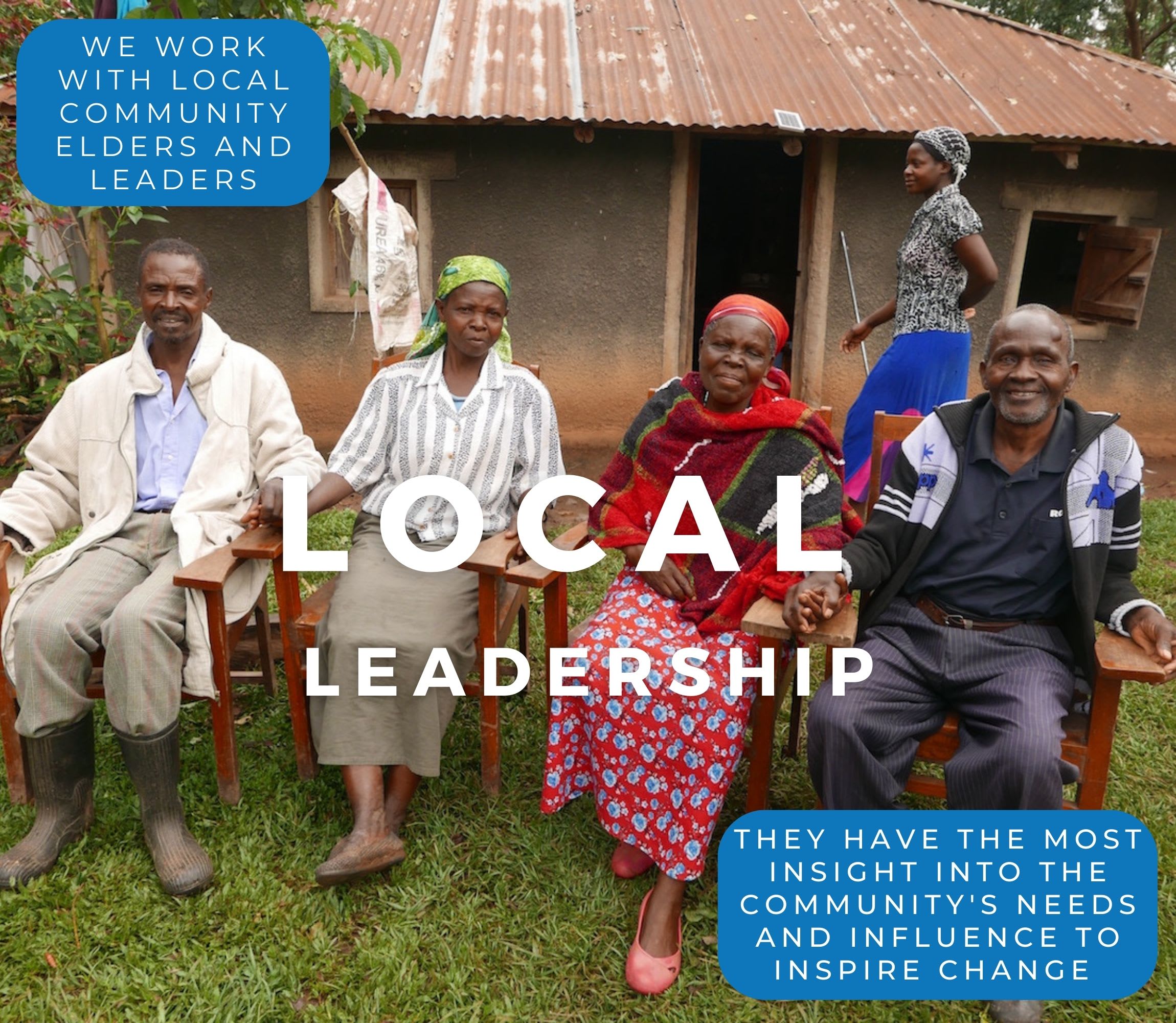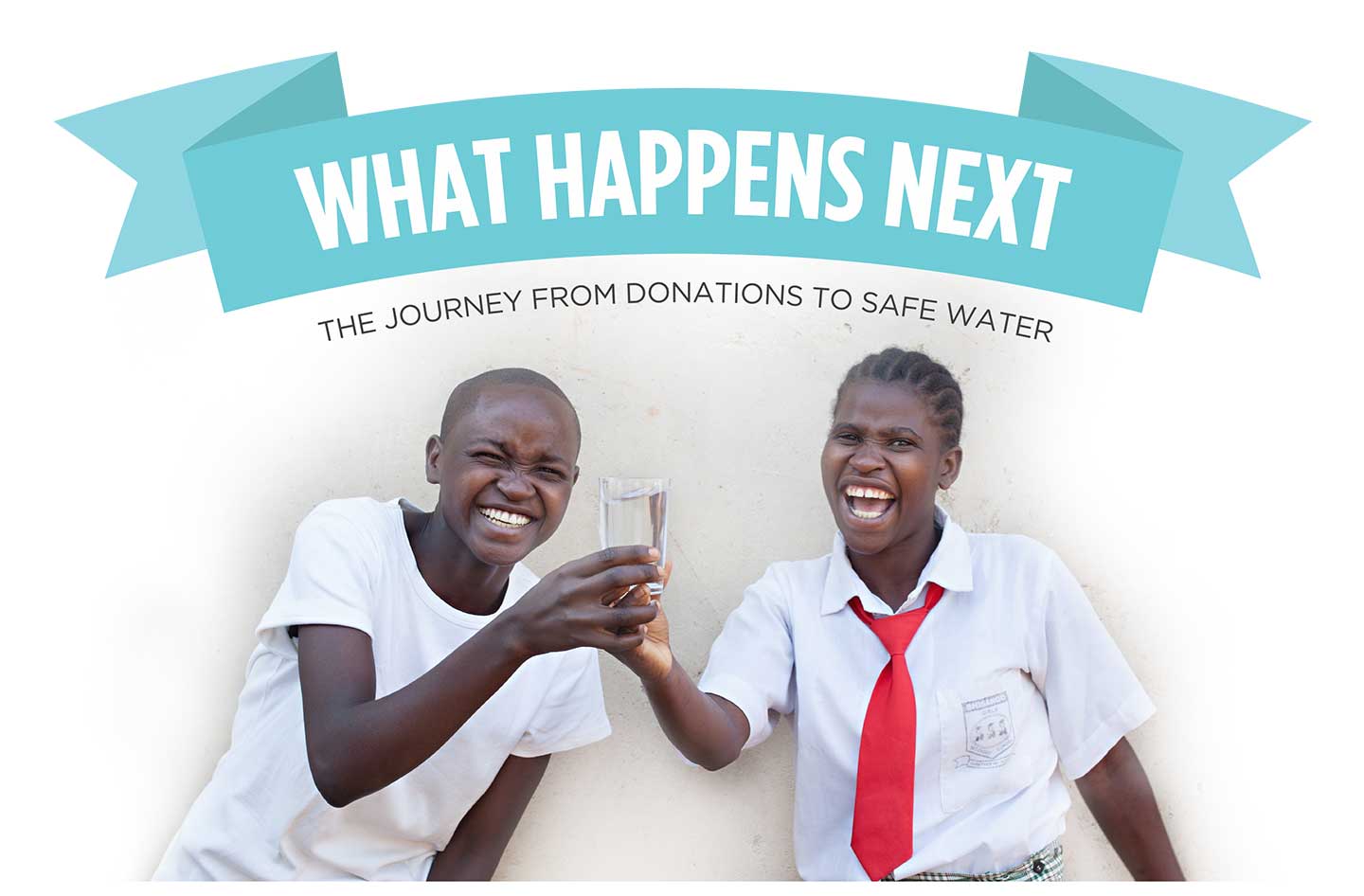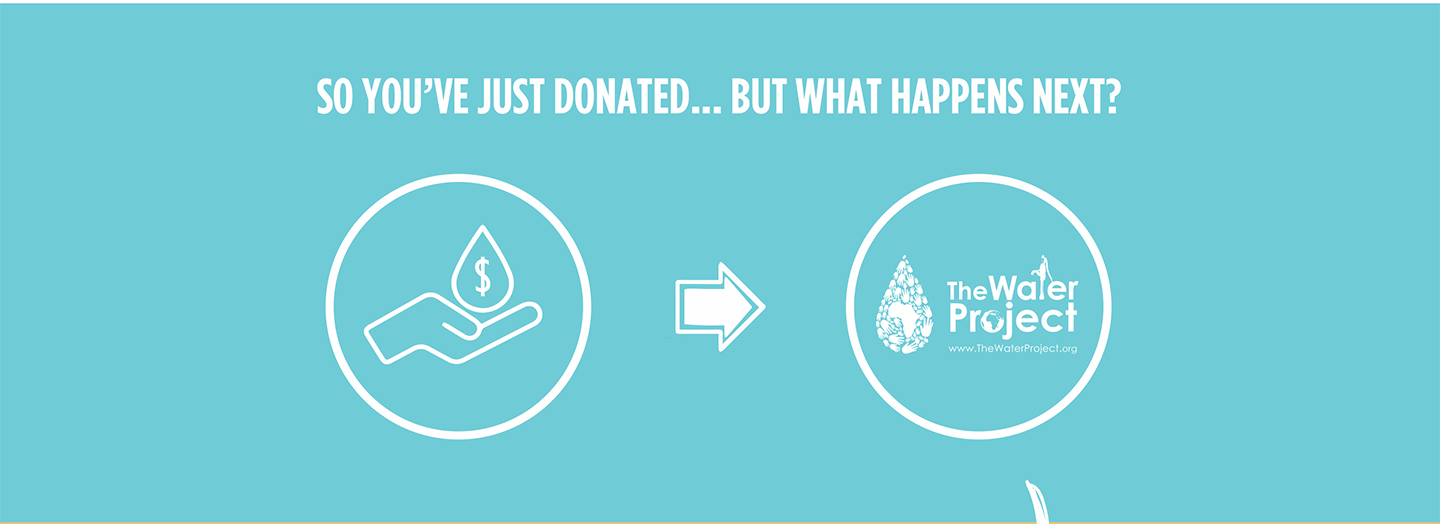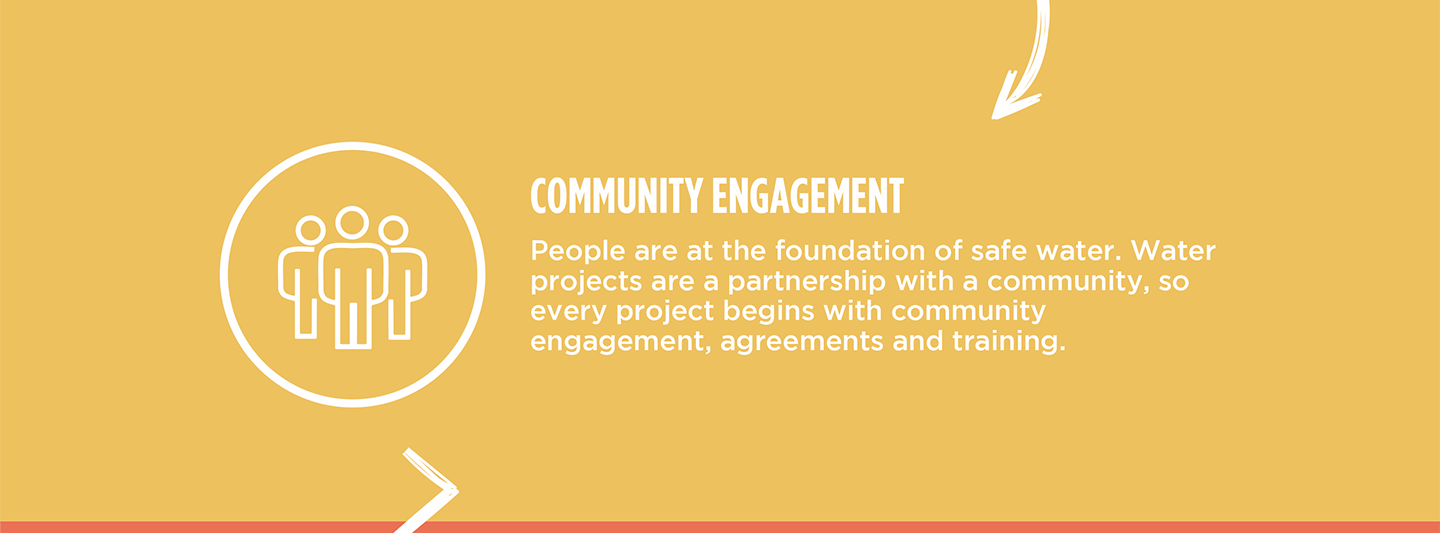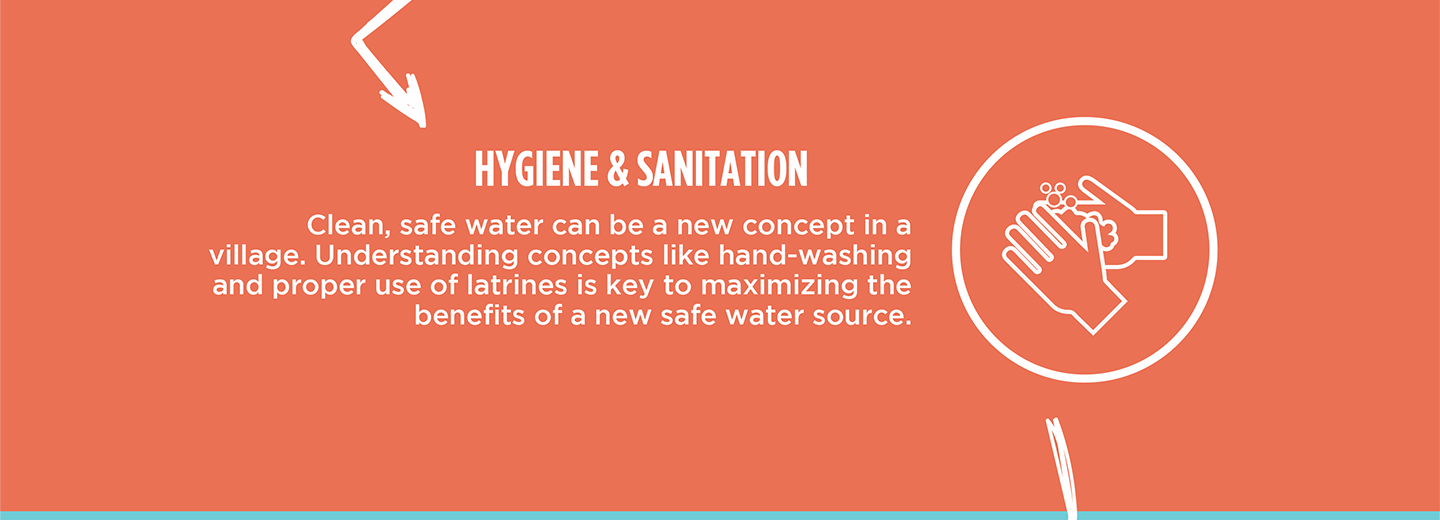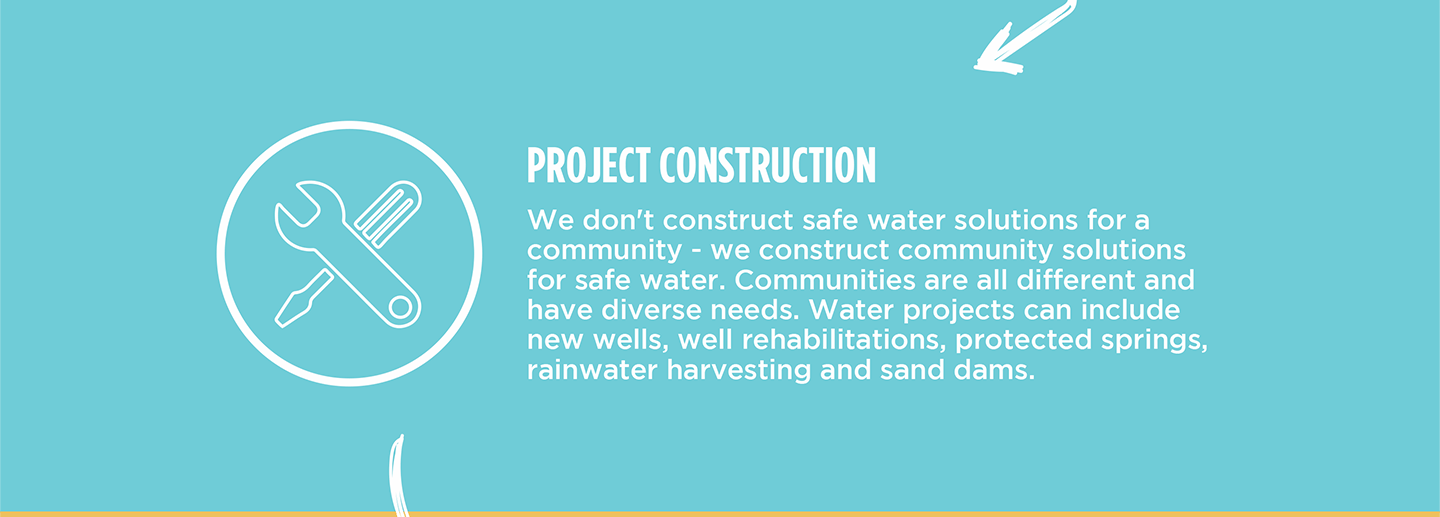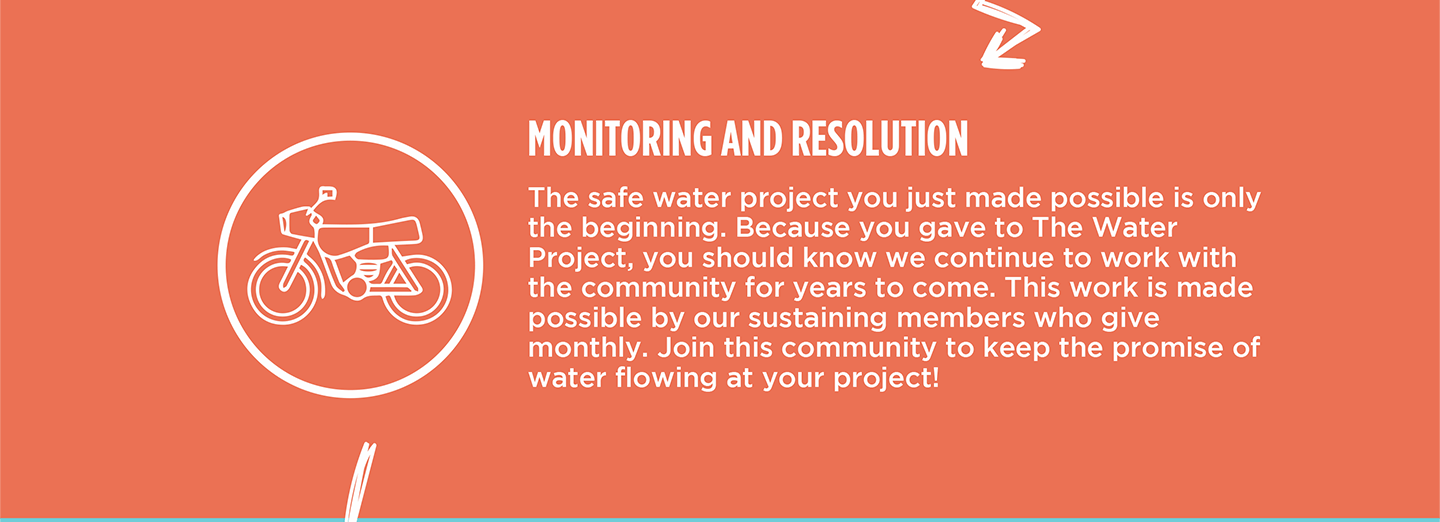January, 2024: Mwikholo Community Spring Protection Complete!
Mwikholo Community now has access to clean water! Thanks to your donation, we transformed their spring into a flowing source of naturally filtered water. We also installed a chlorine dispenser to provide added protection and trained the community on improved sanitation and hygiene practices. Together, these components will unlock the opportunity for community members to live better, healthier lives.

The community members are excited for their newly protected spring!
"Being an elderly woman whose children have gone in search of greener pastures in towns around Kenya, [I] am always home alone, and water is very essential in my day-to-day activities on the farm and at home for domestic use. Seasons change, and in the sunny seasons, my farm will remain productive all year since I now have enough water close by my farm to assist me [in] water[ing] my plants. The productivity will improve greatly, and I'll have much more to harvest in the coming days than before. Safe water from this water point will thus affect my life positively," said 56-year-old farmer Florence Amboso.

Florence (right) excited for clean water!
"I have always wanted to venture into poultry farming, that demands lots of water for the birds to drink and keeping their environment and equipment hygienically clean and to keep diseases at bay. With a mega plan of starting small and growing to a flock of 5,000 birds in the next two years, I believe this is the best time to actualize this plan with the availability of water close by," Florence continued.
Children were just as excited as adults about the new water point.
"Some years ago, when we used to fetch water from this source before its protection and the installation of the chlorine dispenser, I personally suffered frequent diarrheal diseases that ate into my study time and greatly affected my academics. Access to reliable, safe water from this water point will impact my life in many positive ways. One, I'll spend less time fetching water for use at home, so I will have some time for my academic work. Secondly, my family will now redirect all the funds used for hospital bills to start an economic project to add funds to the family basket. Lastly, I won't waste time being treated every now and then, and my academic performance will improve," said Dorine S., 13.

Dorine splashing at the spring!
"Like my mother, I created some seedbeds that the completion of this water point will see through to their success. I will now be able to get water with ease for my beds [and] water the vegetables [in a] timely [manner] and harvest large quantities. With the money realized from this project, I'll be able to save for my high school education and cater [to] some basic necessities of mine as a lady, like sanitary towels," Dorine continued.
Preparing for Spring Protection
Community members worked together to source and carry all locally available construction materials to the spring. These included bricks, sand, stones, and fencing poles. Some people also chiseled away at large rocks to break them into gravel. Because people have to carry most items by hand, the material-collection process can take anywhere from a few weeks to months.

Community participating in preparation for spring protection.
When the community was ready, we sent a truck to deliver the remaining construction materials, including cement, plastic tarps, and hardware. Then, our construction artisan and field officers deployed to the spring to begin work. Individual households provided meals throughout each day to sustain the work team.
From Open Source to Protected Spring: A Step-by-Step Process
First, we cleared and excavated the spring area. Next, we dug a drainage channel below the spring and several runoff diversion channels above and around the spring. These help to divert surface contaminants away.

Excavation
To ensure community members could still access water throughout the construction process, we also dug temporary channels around the construction site from the spring's eye. This allowed water to flow without disrupting community members' tasks or the construction work. Excavation created space for setting the spring's foundation, made of thick plastic, wire mesh, concrete, and waterproof cement.

Setting the foundation.
After establishing the base, we started brickwork to build the headwall, wing walls, and stairs. Once the walls had grown tall enough, we began one of the most crucial steps: setting the discharge pipe. The discharge pipe needs to be positioned low enough in the headwall so the water level never rises above the spring's eye, yet high enough to allow room for the average jerrycan (a 20-liter container) to sit beneath the pipe without making contact, which prevents cross-contamination.

Construction of the walls.
If we place the discharge pipe too high above the spring's eye, back pressure could force water to emerge elsewhere. Too low, and community members would not be able to access the water easily. We embedded the pipe using clay (or mortar when the clay is in short supply) and placed it at an incline to ensure water flows in the right direction.
In coordination with brickwork, we pitched stones on both sides of the spring's drainage channel. We then cemented and plastered each stone, forming the rub walls. These walls discourage people and animals from standing in that area, which could cause soil erosion and a clogged drainage area.

Setting the rub walls to prevent soil erosion.
We then cemented and plastered both sides of the headwall and wing walls. These finishing layers reinforce the brickwork and prevent water in the reservoir from seeping through the walls. In turn, enough pressure builds in the reservoir box to push water out through the discharge pipe.
As the headwall and wing walls cured, we cemented and plastered the stairs and installed four tiles beneath the discharge pipe. The tiles protect the concrete from the falling water's erosive force while beautifying the spring and facilitating easy cleaning of the spring floor.

Setting the tiles.
The final stage of construction is backfilling the reservoir box behind the discharge pipe. We cleared the collection box of any debris that may have fallen during construction. Then, we redirected the temporary diversion channels back into the reservoir box, channeling water into this area for the first time. We close all other exits to force water through only the discharge pipe.

Backfilling the reservoir box.
We filled the reservoir area with the large, clean stones community members had gathered, arranging them in layers like a well-fitting puzzle. We covered the rocks with thick plastic to minimize potential contamination sources, then piled enough dirt on top to compensate for future settling.
Community members transplanted grass onto the backfilled soil to help prevent erosion. The collection area was fenced to discourage any person or animal from walking on it. Compaction can lead to disturbances in the backfill layers and potentially compromise water quality.

Community member planting grass.
The construction process took about two weeks of work and patience to allow the cement and plaster to finish curing. As soon as the spring was ready, people got the okay from their local field officers to fetch water.
We officially handed over the spring to mark the community's ownership of the water point. Happiness, thanksgiving, and appreciation were the order of the day, flowing in all directions.

Training on Health, Hygiene, and More
Together with the community, we found their preferred date for training while considering other community calendar events, such as the agricultural season and social events. We requested a representative group of community members to attend training and relay the information learned to the rest of their families and friends.

Handwash training.
When the day arrived, facilitators Jemmimah and Rose deployed to the site to lead the event. Sixteen people attended the training, including eleven women and five men. We held the training at a community member's homestead near the spring.
We covered several topics, including community participation in the project; leadership and governance; personal, dental, and environmental hygiene; water handling and treatment; spring maintenance; the importance of primary health care and disease prevention; family planning; soapmaking; how to make and use handwashing stations; and the ten steps of handwashing.
During the leadership and governance session, we held an election for the newly formed water user committee leaders, who will oversee the maintenance of the spring. We also brainstormed income-generating activities. Community members can now start a group savings account for any future minor repairs to the spring and a cooperative lending group, enabling them to develop small businesses.
The topic of spring operation and maintenance was very impactful for the group attending the training. They discussed habits, such as bathing in the spring, that could contaminate the water and jeopardize their health. With this new knowledge, the community was excited to put it into practice.

Florence, vice chairperson of the water user committee, said," The training was so valuable, and what touched me most was the skill I got in making soap. This has given me an opportunity to add some business to my kiosk; I will make soap [to] sell."
Conclusion
This project required a substantial collaboration between our staff, our in-country teams, and the community members. When an issue arises concerning the spring, the water user committee is equipped with the necessary skills to rectify the problem and ensure the water point works appropriately and there is guaranteed public access in the future. However, if the issue is beyond their capabilities, they can contact their local field officers to assist them.
Also, we will continue to offer them unmatchable support as a part of our monitoring and maintenance program. We walk with each community, problem-solving together when they face challenges with functionality, seasonality, or water quality. Together, all these components help us strive for enduring access to reliable, clean, and safe water for this community.
With your contribution, one more piece has been added to a large puzzle of water projects. In Kenya, Uganda, and Sierra Leone, we're working toward complete coverage. That means reliable, maintained water sources within a 30-minute round trip for each community, household, school, and health center. With this in mind, search through our upcoming projects to see which community you can help next!
Thank you for making all of this possible!







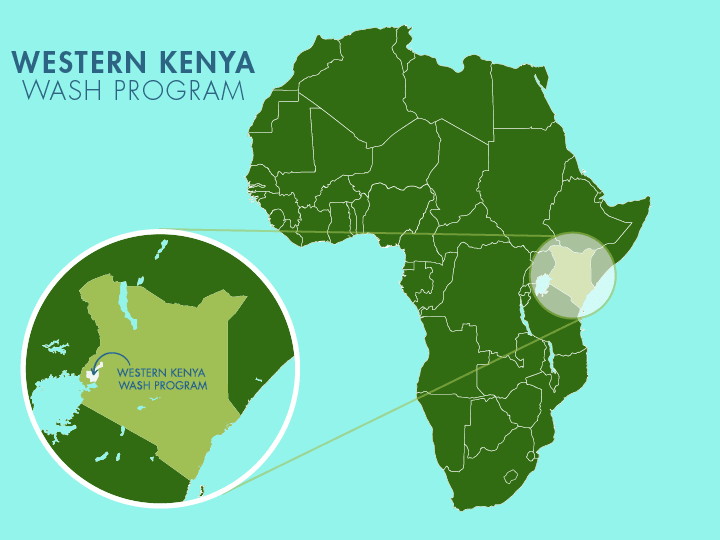
 Protected Spring
Protected Spring
 Rehabilitation Project
Rehabilitation Project

